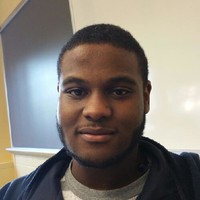
- This event has passed.
CEMB Future Leaders: Richard Vincent
February 16, 2022 at 11:00 AM - 12:00 PM
Launched in May 2021, the Future Leaders in Mechanobiology is a monthly seminar series featuring up-and-coming leaders in mechanobiology–PhD students and postdocs from a wide range of fields, backgrounds, and institutions. By providing an international stage to share one’s work and opportunities to interact with researchers at all career stages, we aim to create an inclusive and valuable series for early-stage researchers and the mechanobiology community as a whole.
Register HERE for access to the Zoom link and visit the CEMB website for more information.

Richard Vincent, PhD
New Jersey Institute of Technology
“Glycosaminoglycan mimetic structural variation impacts stem cell chondrogenesis”
Tissue engineering strategies to treat cartilage damage remain inadequate because of the difficulty in regenerating fully functional cartilage tissue. Glycosaminoglycans (GAGs) are found in the native extracellular matrix (ECM) and have been sought in the tissue engineering field because they can drive cell behavior and contribute to tissue mechanical properties. GAGs have been shown to promote chondrogenesis however, it is unclear what structural features in GAGs are critical for the differentiation and maintenance of the chondrocyte phenotype. We synthesized GAG mimetic variants to more closely represent native GAGs and examined for their influence on stem cell chondrogenesis in both static and dynamic loading conditions. Readily available linear polysaccarides, cellulose, chitin and starch were sulfated having varying degree of sulfation (DOS). Sulfated cellulose (pSC) and starch (SS) have different glycosidic linkage geometry, beta- and alpha-, respectively. Sulfated chitin (ChS) has an N- acetyglucosamine, which is a monomer component of native GAGs. When used in soluble form in mesenchymal stem cell (MSC) pellet or aggregate cultures, pSC and SS enhanced MSC deposition of chondrogenic matrix components. In scaffold form, high DOS pSC and SS containing scaffolds promoted chondrogenesis as demonstrated by a greater ratio of collagen type II to I production as well as chondrogenic gene expression compared to cells on scaffolds containing the native GAG heparin. Both pSC- and SS-containing scaffolds had higher Young’s moduli and higher binding affinity for transforming growth factor beta 3 (TGF-β3) as compared to scaffolds containing ChS or no GAG mimetic variant, suggesting growth factor interaction and mechanical properties of these scaffolds may play role in promoting MSC differentiation. When subjected to dynamic compressive loading, MSCs underdoing chondrogenesis on SS-containing scaffolds promoted a more homogenous cartilage matrix deposition than unloaded control and scaffolds without SS. Collectively, the findings demonstrate higher DOS with either alpha- or beta- glycosidic linkage geometry are structural features of GAGs most favorable for MSC chondrogenesis. GAG-mimetics derived from cellulose and starch may be viable biomaterials for cartilage regeneration applications.
